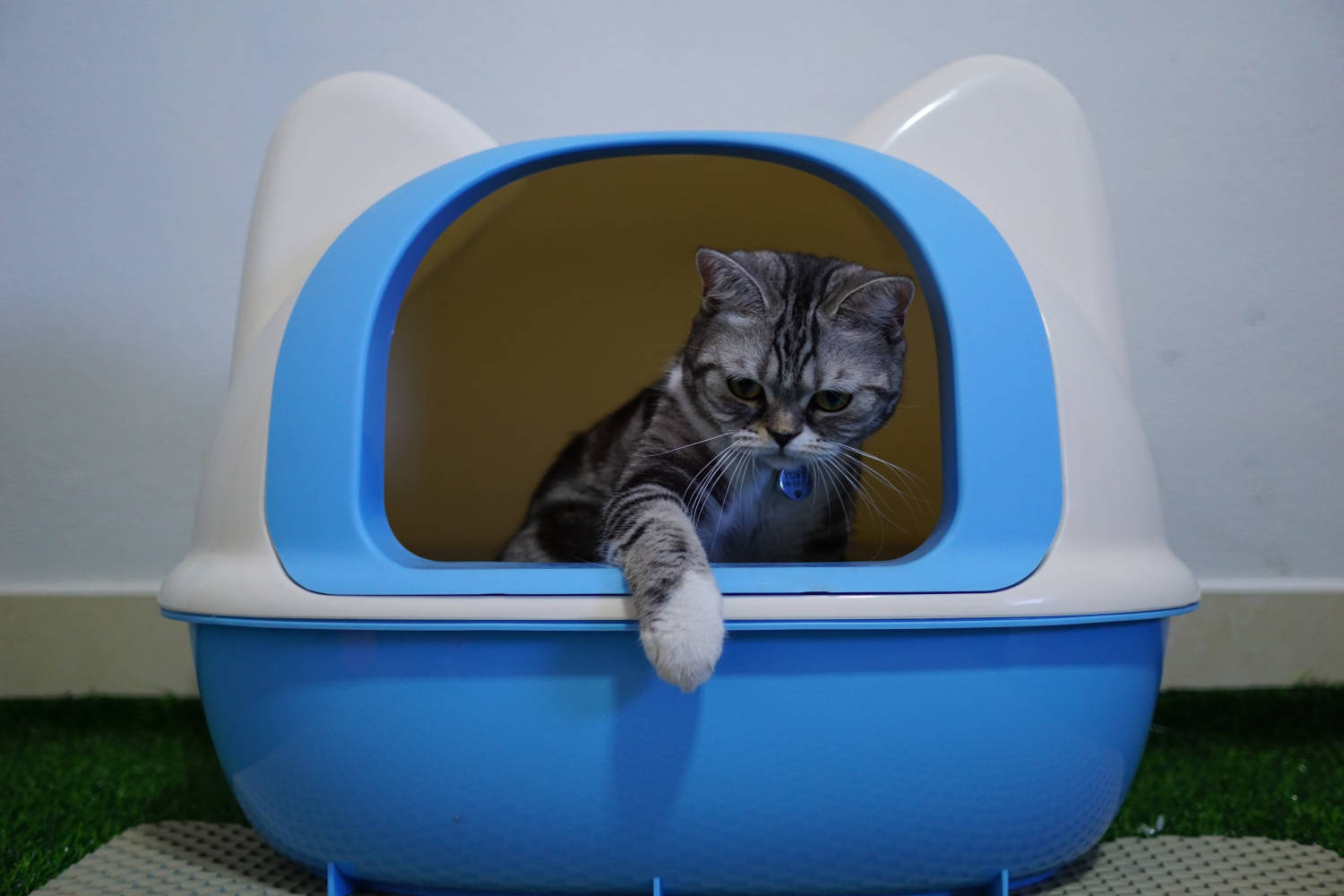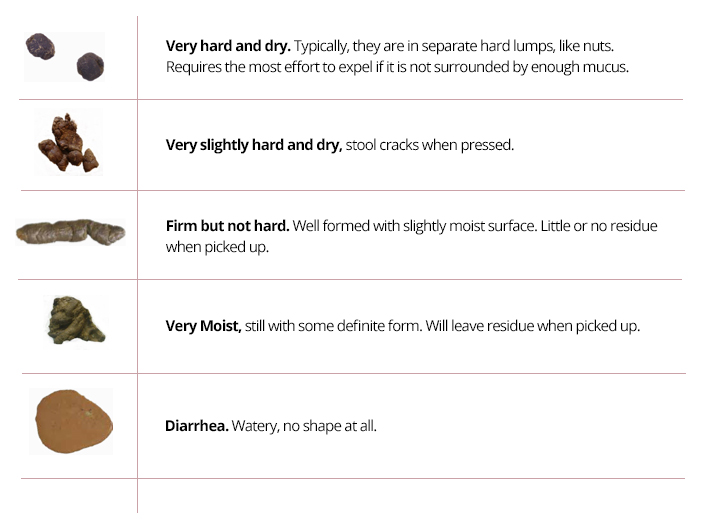What the Poop?

For some people, poop (or however you prefer to call it), is an uncomfortable topic. Nevertheless, it is definitely a very important one that is necessary in determining how healthy both humans and cats are. You can tell a lot from poop. Whether it is by its colour, shape, or density, poop is a vital reference in determining healthy guts. Faeces can tell us if your cat is dehydrated, if it needs more protein in their diet, or if they have any serious underlying issues that may require a professional’s attention.
Cats have evolved from being “desert animals” to domesticated indoor cats for the most part. For this reason, cats are experts at absorbing a lot of water from their food as a survival tactic. If the food they consume is a species appropriate diet, high in protein, they will absorb the majority of the water from the meat and their poos will be predominantly dry, due to this reason. If your cat isn’t drinking a lot of water, that is usually a good sign indicating that they are hydrated and that you are a wonderful cat parent by feeding them incredible food!
When being fed a raw diet, cats poos will immediately differ in appearance compared to cats being fed commercial dry or wet foods. The reason for this is that natural, raw cat food, is high in protein and if it’s REALLY good raw food (or ‘Rawsome’, as we say here at PurrForm), they will only have raw muscle meat, offal, and bone, and all the goodness of a whole prey diet, WITHOUT any added carbohydrates or sugars, which are mainly used to lower the production costs for the company creating it. It is difficult for cats to digest carbohydrates & vegetable matter, as they do not possess the enzymes in their gut. If their food is loaded with them, they will firstly not be getting the hydration they need, and their poos will be much bigger (and usually very smelly) as many of the ingredients are not readily digestible or easily absorbed in the gut. Therefore, these pass straight through their intestines and are expelled at the other end in the faeces! This does not make for a healthy cat.

When a cat defecates, they should not struggle. It should be mostly dry, effortless, painless and odourless. These are the primary indications from poo that your cat is healthy. Most cats on a raw food diet, will go once every 24 – 36 hours, which is perfectly normal. It would be more frequent than this on a processed wet or dry food, as less is digested and absorbed by the body. Once you begin to see straining, there are certain characteristics you should look for in their poo. If you notice any black colour (or blood) in their stool, it can mean several things including diseases of the stomach or small intestine, the rectum or colon, the anus, or systemic disease. It can also just mean that the anus had been slightly ruptured whilst pooing, which is not as severe as it sounds. It is just uncomfortable and can be a bit painful when defecation occurs, so monitoring would be necessary if this is noticed.
The first type of poo we want to discuss is one we would describe as separate hard lumps of poo. These can sometimes be a bit difficult to pass and can on occasion, cause some discomfort to the cat when they are defecating. If there is no sort of straining that is visible to you, there is no need to worry. If you are feeding raw, this can be classed as ‘normal’ & there would virtually be no odour. Our mascot Trixie occasionally leaves hard lumps of poo but these are often surrounded by mucus, which helps ease the passage of the pellet sized faeces. This could indicate some signs of constipation in some cats, particularly if they are fed a processed wet or dry food, as these foods generally tend to make the stools softer, as less of the food is digested. However, it is not necessarily the case. Adding more protein to their diet should do the trick, as the meat will naturally provide the cats with the bit of extra water and hydration if they need it in their system. If that still does not work, try adding tuna brine, or ½ teaspoon of butternut squash, or a ½ teaspoon of water into their food. An extra bit of fibre can help if you believe your fur baby is constipated. Some raw foods do contain too much bone which is not good, as this can make a cat constipated. However, if it is perfectly balanced (as is the case with ‘PurrForm’) with the correct ratio of meat to bone & offal, there should be no problem.
The second is what we consider the ‘ideal’ poo. It is ideal because it means that your cat has a balanced diet and is having an effortless time pooing. They are hydrated and healthy and have absorbed all of the necessary nutrients from the ‘Rawlicious’ food you are giving it! You can pick it up easily and there is no odour associated with this poo as well. It would feel firm and solid but not too hard like a rock. It would break apart if you press on it hard enough, because the moisture has been absorbed.
Third, we have “the log”. This poo is typically shaped like a log, it is moist, long, & it might smell a bit. It will leave residue when you clean it up. It isn’t our favourite poo, but it’s not the worst. It is effortless to release but it does indicate that your lovely feline hasn’t absorbed all of the nutrients from its food and it might be a bit thirsty. If you are feeding a mix of dry and wet/and or raw, try reducing the dry bit and you should see a difference in the poo, within a short space of time.

Fourth, we have not come up with a name for this name as it can come in several shapes. The main characteristics are that it is still well formed, very moist, and will absolutely leave residue when picked up. These tend to have a strong odour and again, usually indicate that the cat’s diet is less than ideal, as the softer poops indicate that less of the food is being absorbed and utilised by its body.
Lastly, we have the infamous diarrhoea. This poo has no shape or form whatsoever. It is extremely watery and smelly and isn’t what you would desire for your cat. You as the owner, must make some adjustments to your fur baby’s diet and if you are still not satisfied with the results afterwards, do contact your vet for advice, or even feel free to give us a call, as we might also have some insight on how to help!
In conclusion, we believe in a high protein diet, which is what a cat requires for a healthy digestive system, which in turn, affects the faeces. If a cat does seem a bit dehydrated, & is struggling to defecate, just add more meat protein, or a little more fibre. Although not the nicest of topics, we want you all to understand how vital poo is, and the benefits it can bring to you and your cat, by monitoring it.
Please see the attached a cat faeces chart, as a reference. (probably not something you wish to display on your kitchen wall!)
